Almond Roca: 10 Facts About The Popular Candy
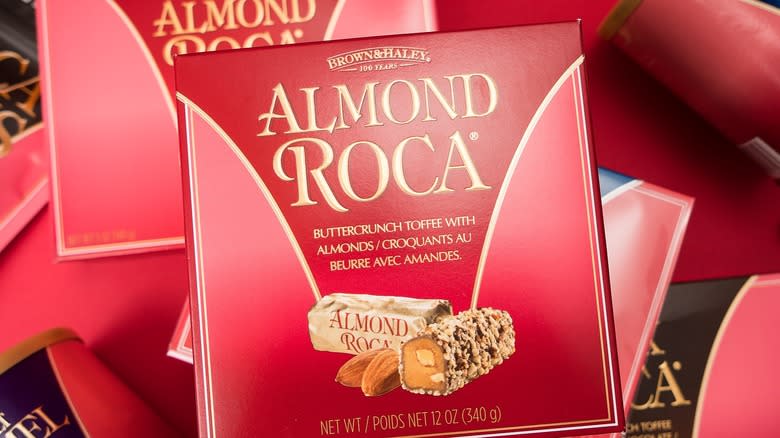
Those in the know know that when they see the shimmering golden wrapper of a thumb-sized piece of Almond Roca, they're destined for a true treat. Made according to a recipe that has remained virtually unchanged for over a century, this candy begins with a heart of English toffee, a buttery, sweet treat with the faintest caramelized bitterness and an irreplicable shattery texture. Enrobed in a layer of chocolate and covered with a coating of chopped almonds, this candy is unsurprisingly beloved across the country — and indeed around the world.
But did you know that it got its unique name from a librarian? Or that it has been adapted into flavors far beyond almonds? From the links between this Tacoma creation and Elvis Presley to the ways in which the brand remains true to its roots, we've dug deep into the history of this all-American candy. What follows is a list of facts even diehard Almond Roca fans may be surprised to learn.
Read more: The Most Unique Chip Flavors Ever To Grace Store Shelves
Almond Roca Was Invented In Tacoma 100 Years Ago
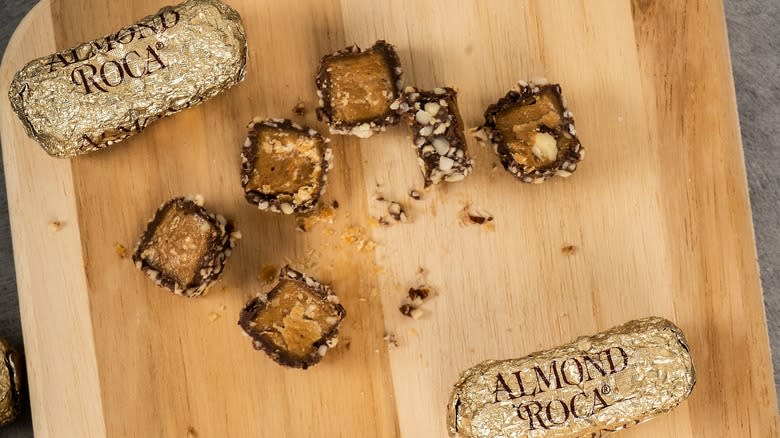
Almond Roca was first sold in 1923 by business partners J.C. Haley and Harry Brown. The pair met in 1908 at a local church in Tacoma, Washington. Both in their late 20s and successful in their respective fields, Haley had a head for business, and Brown was the candy mastermind. Four years after their first meeting, they founded a business partnership, which originally maintained the name of Brown's preexisting confectionery endeavor, the Oriole Candy Company. Soon after, they renamed it Brown & Haley.
Together, the pair began marketing candy sticks, butterscotch drops, and their first runaway success: the Mount Tacoma Bar, which would later be redubbed the Mountain Bar. A smooth vanilla fondant filling and a layer of nuts were enrobed in a layer of chocolate to create this runaway success (These days, peanut butter and cherry versions are also available). It wasn't until 1923 that they came up with the idea of the Almond Roca, a butter-infused toffee coated in chocolate and diced almonds that would soon prove to be their best-selling and most recognizable creation.
Almond Roca Owes Its Name To A Local Librarian, Jacqueline Noel

While Harry Brown was the candy mastermind, it was actually Jonathan Haley who developed the first batch of what would become Almond Roca in the early 1920s, taking advantage of his experience working as a salesman for the Schilling Spice Company to come up with a name for it. And this he did by polling the locals.
He offered samples of the toffee to Tacoma residents, including local librarian Jacqueline Noel. She ultimately came up with the name of the candy, inspired by its hard, crunchy texture, which reminded her of the word "rock." Since most almonds were imported from Spain at the time, she suggested the Spanish word for rock, "roca," and the name stuck. Perhaps it was her last name, which is French for Christmas, that predestined Almond Roca to be such a beloved holiday treat.
It's thanks to Noel's contribution that Almond Roca is particularly beloved in China. "Roca" sounds similar to the Cantonese "lok gaa," which means happy family; such an auspicious name has no doubt contributed to the fact that these days, Lunar New Year is the company's second biggest holiday after Christmas.
Its Distinctive Tin Made It Easy To Transport Abroad

Almond Roca was sold in a distinctive pink tin until 2012, when, in honor of its centennial, the packaging was given a bright new look. The original tin, however, was an essential contributing factor to Almond Roca's worldwide success.
The pink tin was introduced just four years after the candy's invention in collaboration with a local canning facility. The new tin tripled the candy's shelf life and made it far easier to ship the candy across the country — and indeed, around the world. Early exports saw Almond Roca on its way to Canada and the Philippines before, legend has it, even making its way to the top of Mount Everest in the hands of Roca-lover Edmund Hillary.
At the onset of World War II, Brown & Haley secured a government contract to continue producing the candy and selling it to the government, which then distributed it to deployed soldiers. It soon became beloved by local populations, and by the 1990s, Almond Roca had become the most-exported gift candy in the country. In 2016, 40% of Almond Roca was exported, and today, you'll find it in 63 countries around the world.
The Brown Family Is No Longer Involved
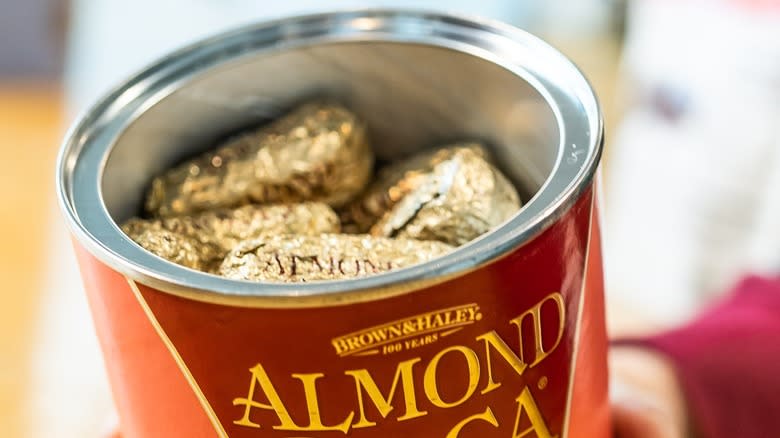
Despite the name of the company still reflecting Harry Brown's essential involvement, the Brown family sold their shares in the company just 21 years after the candy was invented, in 1944. The Haley family nevertheless still remains involved, and the business is still operated in part by Haleys a century after its founding. Anne Haley, granddaughter of JC Haley, remains the chairman of the board of the company; John Melin replaced Pierson Clair as CEO of the company in 2022, becoming the sixth CEO to helm the business.
Of course, things have been updated since the early days of Brown & Haley, with automated lines replacing the previous handmade process that saw molten candy poured onto large tables and cooled with water. Women once cut the candy with large round cutters and wrapped each piece one by one in its distinctive gold wrapper.
Almond Roca Briefly Vied For State Candy Status
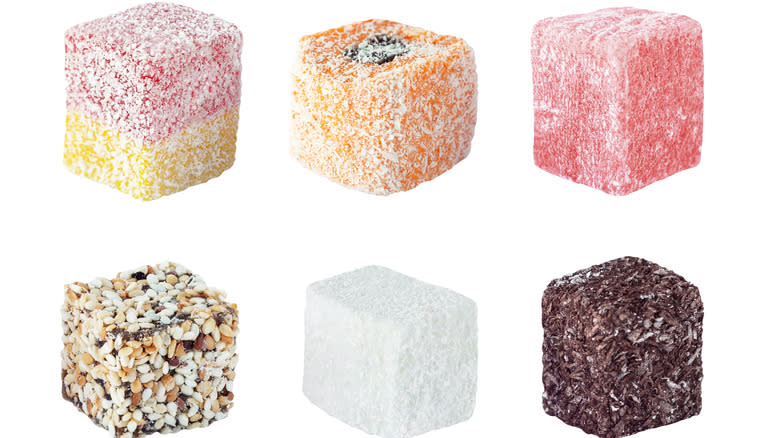
Washington is home to many delicious local candies, including Aplets and Cotlets, a chewy, jellified confection produced by Cashmere's Liberty Orchards. The company was founded by Armenian immigrants who grew up eating Turkish delight. They took inspiration from this beloved sweet in crafting a candy that would take advantage of a surplus of apples from their Washington apple orchard, a testament at once to the food of their roots and to the bounty of their adopted home.
In 2008, one Washington lawmaker attempted to have Aplets and Cotlets declared the official state candy, leading others to nominate other contenders, such as Fran's salted caramels, ostensibly a favorite of the Obamas. It's no surprise that Almond Roca was nominated as well, especially seeing as this was not the first time the butter toffee had been considered for the position — a measure to name it state candy surfaced and ultimately failed in 2001. Alas, the measure ultimately failed again in 2009, and today, neither Aplets and Cotlets nor Almond Roca boasts this laudable distinction.
These Days There Are Multiple Flavors Of Roca

While Almond Roca may well be the original and most famous iteration of this buttery, crunchy toffee, Brown & Haley now makes multiple flavors of Roca, including sea salt caramel and Dark Roca with a dark chocolate coating. A holiday special Peppermint Roca lends a minty twist to the classic treat. Mocha Roca, born of a 2002 collaboration with Starbucks, sees roasted Arabica coffee beans infused in the cashew nut coating.
Speaking of which, these days, Roca isn't limited to almonds alone. The toffee can be coated in a variety of different nuts including macadamia nuts and cashews. Despite cashews being far more expensive than almonds, the cashew iteration of the candy costs the same $6.99 per five-ounce box as the almond version. Macadamia nuts, on the other hand, as the world's most expensive, fetch a slightly higher price: A smaller 4.9-ounce flat gift box of Macadamia Roca costs $6.99 as compared to the $5.99 for a flat 5-ounce gift box of Almond Roca.
All Of The Candy Is Made In Just One Factory
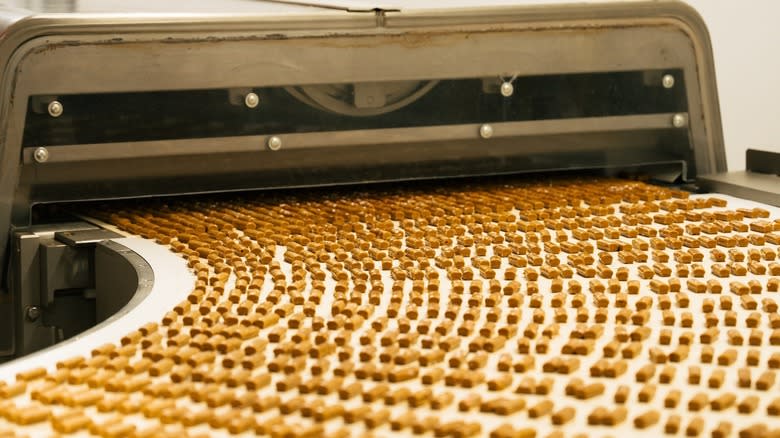
Some 3 million pieces of Roca are made every single day, and all of that sweet toffee comes from just one plant in Tacoma: a former shoe factory turned candy wonderland. Despite expansions over the years — seven at last count in 2021 — the same factory has been making Almond Roca for over a century.
Today, visitors to the factory can also visit the on-site store, which was built in 1962 for the World's Fair in Seattle. At the end of the fair, the whole building was trucked to Tacoma and topped with a spinning tin of Roca. Today, the store sells imperfect candy to fans; they can also get their picture with a plaque in honor of Elvis Presley, who ostensibly used the building as a hiding place to for some peace and quiet in between shooting scenes for "It Happened at the World's Fair."
Its Unique Texture Comes From The Top-Secret Method
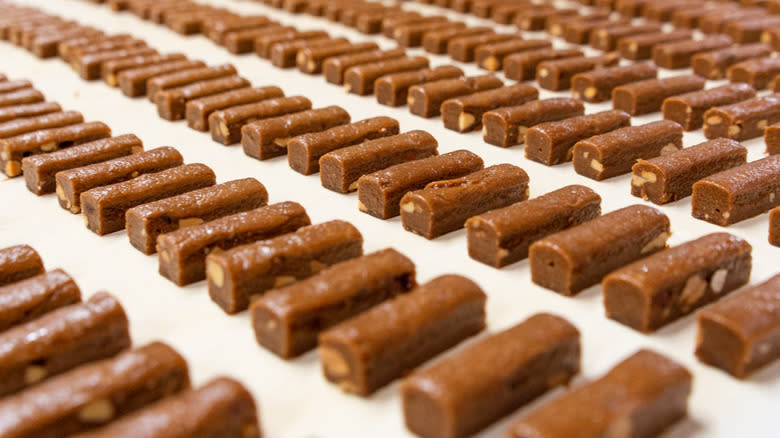
What makes Almond Roca stand out as compared to other toffees is its unique texture. Crackly and crumbly, the toffee is butterier and richer than many others on the market.
"You'll notice the break is different," Kathi Rennaker, Brown & Haley's director of marketing, tells the Seattle Times. "It's a softer snap where, instead of it cracking and breaking, you can bite through it. That's our top-secret thing."
For Seattle Times food writer Jackie Varriano, the uniqueness of this particular toffee comes down to the time-tested technique used by the Tacoma factory since the outset. The candy, production lead Adam Langer tells the outlet, is made daily by melting "butter, oil, sugar, and magic" into a molten mixture that flows through a complex system of cooling tunnels. This quickly reduces its molten, 200-degree Fahrenheit temperature to 150 degrees, at which point the ribbons of the candy are sliced. The solid toffee is coated with liquid chocolate and shaken through the nut coating before being wrapped in its distinctive golden wrapper.
The Foil Wrapper Is Non-Negociable For Fans
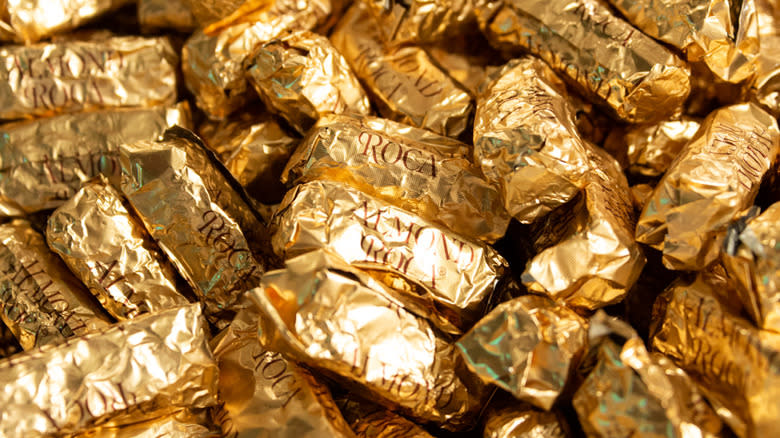
Shiny and tantalizing, Almond Roca's golden wrapper has been a part of the candy's destiny since the early days, when 1,000 pieces of Almond Roca were produced and hand-wrapped at the factory every single day. The company had no idea how essential the foil wrapper had become to the image of its product until one failed attempt to sell tubs of unwrapped Roca, incurring the wrath of fans who sent incensed letters demanding the company bring the wrapper back (It did).
This is no surprise, according to Beth Kimmerle, a food historian and author of several books on candy and chocolate. "Eating candy is a sensory experience and it starts with the wrapper," she tells the Seattle Times. "If you've had something and you're plucking it from a plastic wrapper it doesn't have the same sexiness. That foil wrapper evokes handmade, it evokes quality."
Almond Roca Is Delicious On Its Own But Can Also Be Used In Recipes
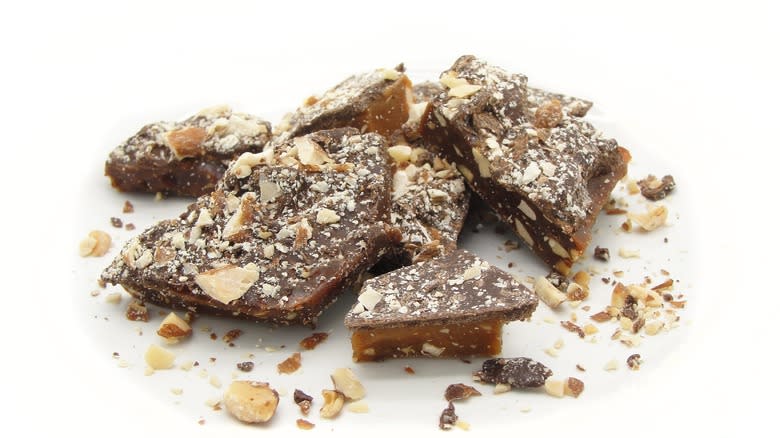
There's no need to do much to Almond Roca for it to be delicious: Just unwrap and take a bite. That said, some home cooks have fun toying with Roca to craft their own recipes, some of which have even been recognized by the company itself. From Nanaimo bars to cake pops to a multi-layered pie, Almond Roca is a creative way to add flavor and crunch to loads of desserts. And the bounty of recipes that take advantage of its unique flavor and crunch means that any broken Almond Roca easily find a new lease on life.
In addition to making recipes with Almond Roca, some enterprising home cooks also like to try their hand at making Almond Roca at home. It's usually easier to make the toffee-chocolate combo in slab form rather than in the small logs folks are used to, but it's tasty nevertheless.
Read the original article on Mashed.

